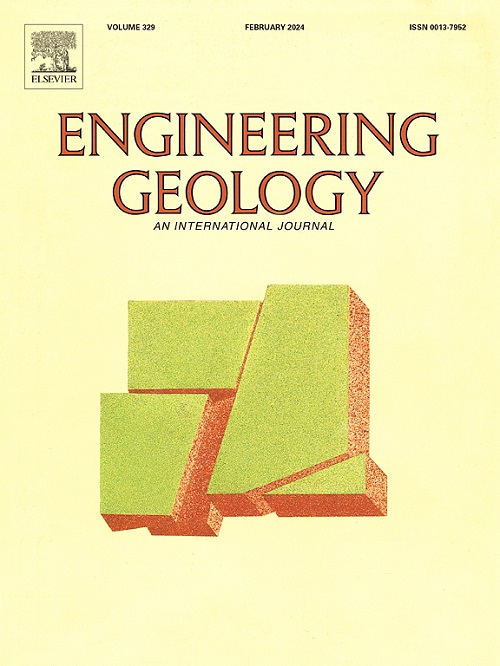An open event-inventory database of rainfall-induced landslides and their environmental characteristics in the eastern Black Sea region of Türkiye
IF 6.9
1区 工程技术
Q1 ENGINEERING, GEOLOGICAL
引用次数: 0
Abstract
Developing robust predictive methods for rainfall-triggered landslides is crucial for effective risk mitigation. Landslide event inventories provide essential data to understand the relationship between environmental factors and the spatiotemporal distribution of landslides. However, many mountainous regions prone to landslides still lack such comprehensive datasets. Türkiye is among these regions, experiencing frequent and often fatal landslides, yet only a few recorded landslide event inventories exist. In this study, we compiled eight inventories of rainfall-induced landslide events for the eastern Black Sea region of Türkiye. These inventories were generated using high-resolution imagery obtained from multiple sources, including satellite images, unmanned aerial vehicles (UAVs), and aircraft-based imagery. Using both univariate and multivariate statistical analyses, we analyzed the topographic, meteorological, lithologic, and anthropogenic factors influencing landslide occurrence. In evaluating the meteorological factors, we found that all eight landslide events were triggered by intense rainfall. However, our comparison revealed that spaceborne precipitation products consistently failed to capture the intense rainfall events that triggered landslides in the region. Our statistical analyses also showed that landslide occurrence rates are significantly higher in areas affected by anthropogenic land use and land cover (LU/LC) changes, particularly in zones where forested areas have been converted into agricultural plantations, such as those for tea and hazelnut.
为降雨引发的山体滑坡开发可靠的预测方法对于有效减轻风险至关重要。滑坡事件清单是了解环境因素与滑坡时空分布关系的重要数据。然而,许多容易发生山体滑坡的山区仍然缺乏这样全面的数据集。t rkiye是这些地区之一,经常发生致命的滑坡,但只有少数记录在案的滑坡事件清单。在这项研究中,我们编制了8个降雨诱发的滑坡事件清单,用于黑海东部地区的 rkiye。这些清单是使用从多个来源获得的高分辨率图像生成的,包括卫星图像、无人驾驶飞行器(uav)和基于飞机的图像。采用单因素和多因素统计分析,分析了影响滑坡发生的地形、气象、岩性和人为因素。在气象因素评价中发现,8起滑坡事件均由强降雨引发。然而,我们的比较显示,星载降水产品始终未能捕捉到引发该地区山体滑坡的强降雨事件。我们的统计分析还表明,在受人为土地利用和土地覆盖(LU/LC)变化影响的地区,滑坡发生率显著较高,特别是在森林地区被转变为农业种植园的地区,如茶园和榛子园。
本文章由计算机程序翻译,如有差异,请以英文原文为准。
求助全文
约1分钟内获得全文
求助全文
来源期刊

Engineering Geology
地学-地球科学综合
CiteScore
13.70
自引率
12.20%
发文量
327
审稿时长
5.6 months
期刊介绍:
Engineering Geology, an international interdisciplinary journal, serves as a bridge between earth sciences and engineering, focusing on geological and geotechnical engineering. It welcomes studies with relevance to engineering, environmental concerns, and safety, catering to engineering geologists with backgrounds in geology or civil/mining engineering. Topics include applied geomorphology, structural geology, geophysics, geochemistry, environmental geology, hydrogeology, land use planning, natural hazards, remote sensing, soil and rock mechanics, and applied geotechnical engineering. The journal provides a platform for research at the intersection of geology and engineering disciplines.
 求助内容:
求助内容: 应助结果提醒方式:
应助结果提醒方式:


